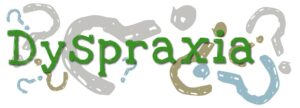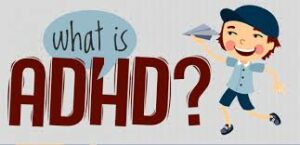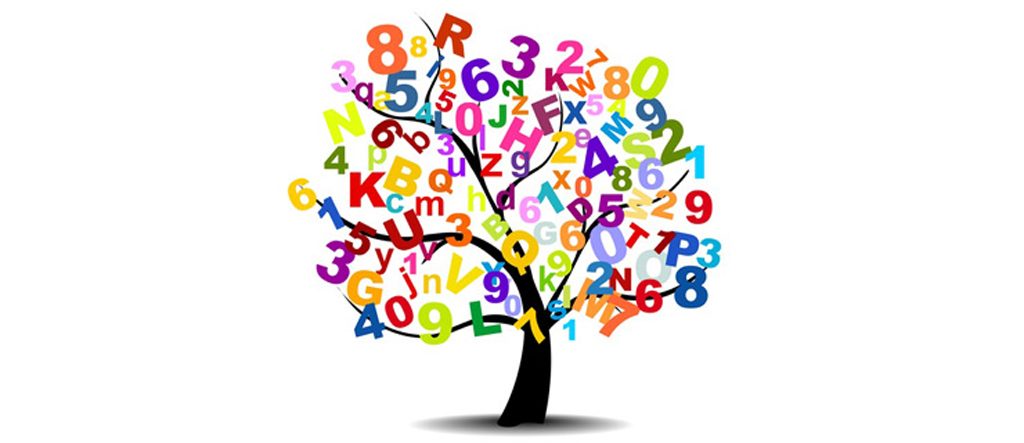If you have a child who has been diagnosed with dyspraxia or ADHD, you may be feeling overwhelmed and confused. It can be difficult to know what to do next, and where to find information and support. This article will provide you with information about both conditions, including the symptoms, causes, and treatment options. We hope that this information will help you feel more confident in your ability to care for your child and that you will find the support that you need!
Contents
Defining Dyspraxia
 Dyspraxia is described as a motor learning disability. It is neurological in origin and affects the planning and execution of movement. Many individuals with dyspraxia have difficulty with fine and/or gross motor skills, as well as with coordination.
Dyspraxia is described as a motor learning disability. It is neurological in origin and affects the planning and execution of movement. Many individuals with dyspraxia have difficulty with fine and/or gross motor skills, as well as with coordination.
Dyspraxia can impact any or all aspects of an individual’s life, from academics to social interactions. It is often comorbid with other conditions, such as ADHD, anxiety, and depression. There are some common symptoms of dyspraxia, which include:
- Poor coordination
- Clumsiness
- Problem with fine motor skills (e.g., writing, tying shoelaces)
- Problem with gross motor skills (e.g., biking, swimming)
- Difficulty with spatial awareness
- Poor balance and/or proprioception
So, these symptoms and signs are indicative that you need to get a diagnosis from a professional. If your child is struggling in school, has trouble making friends, or seems to be always clumsy, it’s worth looking into whether dyspraxia may be the cause.
Defining ADHD
 ADHD is a condition that is characterized by problems with focus, hyperactivity, and impulsiveness. It is most often diagnosed in childhood but can carry into adulthood. ADHD can make it difficult to succeed in school, at work, and in personal relationships.
ADHD is a condition that is characterized by problems with focus, hyperactivity, and impulsiveness. It is most often diagnosed in childhood but can carry into adulthood. ADHD can make it difficult to succeed in school, at work, and in personal relationships.
There are three types of ADHD: predominantly inattentive type, predominantly hyperactive-impulsive type, and combined type. The most common type is the combined type, which includes symptoms of both inattentiveness and hyperactivity-impulsivity.
ADHD is not caused by bad parenting, poor diet, or too much screen time. It is a neurodevelopmental disorder that is believed to be genetic. Research suggests that ADHD runs in families.
Link Between Dyspraxia And ADHD
It is believed that there is a link between dyspraxia and ADHD. It is not clear what causes this link, but it is thought that it may be due to a combination of genetic and environmental factors.
There are many similarities between the two conditions and differences. Let’s discuss some of the similarities and differences between dyspraxia and ADHD.
Similarities
- cause problems with concentration and focus
- cause problems with impulsivity and hyperactivity
- can interfere with learning
- can impact social skills
So, the similarities are more often than not found in the symptoms of each condition. It is important to remember that dyspraxia and ADHD are two separate conditions, however, and should be treated as such.
Differences
Dyspraxia is a motor disorder that affects the ability to plan and execute movements. ADHD is a neurodevelopmental disorder that affects attention, impulsivity, and hyperactivity.
Dyspraxia often occurs in people who have no other neurological disorders. ADHD often occurs in people who have other neurological disorders such as Tourette syndrome, OCD, or bipolar disorder.
Dyspraxia is more common in males than females. ADHD is more common in males than females.
Dyspraxia is believed to be caused by problems with the way the brain processes information. ADHD is believed to be caused by a combination of genetic and environmental factors.
These differences between the two disorders can make it difficult to diagnose one disorder when the other is present. It is important to work with a qualified professional to get an accurate diagnosis.
Negative Impacts Of Dyspraxia And ADHD
 There are some negative impacts of dyspraxia and ADHD that you should be aware of. These include:
There are some negative impacts of dyspraxia and ADHD that you should be aware of. These include:
Poor school performance
Dyspraxia and ADHD are both associated with poor school performance. This is because both conditions can make it difficult to concentrate and pay attention in class. As well as make it hard to complete tasks and meet deadlines. More often, children with dyspraxia and ADHD will have to repeat a grade or be held back a year.
Social difficulties
Dyspraxia and ADHD can also cause social difficulties. This is because both conditions can make it hard to communicate effectively and interact with others. This can make it difficult to make and keep friends. When you are not able to understand or follow social rules. It can be really easy to upset or annoy people without meaning to.
Low self-esteem
Dyspraxia and ADHD can also lead to low self-esteem. This is because both conditions can make it hard to achieve things that are important to you. For example, if you have dyspraxia, you may not be able to do the things that you enjoy or are good at. This can make you feel like you are not good enough and lead to low self-esteem.
Impact on family life
Dyspraxia and ADHD can also have an impact on family life. This is because both conditions can make it hard to manage time, be organized, and stay on task. This can be frustrating for parents and siblings who may feel they have to constantly help or support the person with dyspraxia or ADHD.
Difficulty completing tasks
 This is one of the most common symptoms of both dyspraxia and ADHD. It can be hard to start and finish tasks, especially if they are complex or require a lot of concentration. This can lead to problems at school, work, or at home. In fact, this can be one of the most frustrating and debilitating symptoms of either condition.
This is one of the most common symptoms of both dyspraxia and ADHD. It can be hard to start and finish tasks, especially if they are complex or require a lot of concentration. This can lead to problems at school, work, or at home. In fact, this can be one of the most frustrating and debilitating symptoms of either condition.
These are some of the negative impacts of dyspraxia and ADHD. If you have either condition, it is important to be aware of these potential difficulties so that you can get the support and help you need.
If you or someone you know has dyspraxia or ADHD, there are a few things that can be done to help manage the condition.
How To Manage Both Conditions?
If you have a child who has been diagnosed with both dyspraxia and ADHD, you may be wondering how to best manage both conditions. Here are some tips that may help:
Create a routine
Having a set daily routine can help provide structure for both your child and yourself. This can include things like set times for homework, meals, and bedtime. Having a visual schedule can also be helpful. Moreover, routine and structuring your day can have positive effects on your child’s behavior and attention span. In fact, it is believed that a routine can help “reset” the brain and nervous system, which may be beneficial for children with dyspraxia and ADHD.
Break up activities
If your child is struggling to focus on one task, try breaking the activity into smaller parts. For instance, if they need to clean their room, start with making the bed, then move on to picking up toys, and so forth. Breaking tasks down into smaller chunks can help your child feel less overwhelmed and more successful. Also, you can try using a timer to help your child stay on task.
Encourage physical activity
Both dyspraxia and ADHD can be improved with regular physical activity. Exercise has been shown to improve focus, attention, and concentration. It can also help reduce stress and anxiety. Furthermore, physical activity can provide a much-needed outlet for children with these conditions.
Make time for relaxation
 In life, there will always be things that are out of our control. This is especially true for children with dyspraxia and ADHD. Therefore, it is important to make time for relaxation and downtime. This can include things like:
In life, there will always be things that are out of our control. This is especially true for children with dyspraxia and ADHD. Therefore, it is important to make time for relaxation and downtime. This can include things like:
- reading
- listening to music
- spending time in nature
Relaxation techniques such as:
- deep breathing
- yoga
- massage
- mindfulness
These things can also be beneficial. Taking some time each day to relax can help your child (and you!) feel calmer and focused.
Get plenty of sleep
Sleep is essential for everyone, but it can be especially important for those with ADHD and dyspraxia. Make sure to create a bedtime routine that will help your child wind down and get a good night’s sleep. There are also some sleep aids that may be helpful, such as:
- white noise machines
- weighted blankets
- essential oils
So, if you have a child with both ADHD and dyspraxia, don’t despair! Just a few things can change everything for the better.
Keep a positive outlook
It can be easy to get caught up in the challenges of managing both ADHD and dyspraxia. Try to focus on the positive aspects of each condition and celebrate your child’s accomplishments. Moreover, try challenging negative thoughts and beliefs about your child’s abilities. Remember, you are your child’s biggest advocate!
Moreover, a positive outlook is actually a great tool that can help you manage both conditions better. So, keep a positive outlook, and things will get better for sure!
Professional Treatment Options
 When you feel like you or your child is struggling to keep up with schoolwork, it may be time to seek professional help. Many people don’t realize that there are options available for treating dyspraxia and ADHD. Some of these include:
When you feel like you or your child is struggling to keep up with schoolwork, it may be time to seek professional help. Many people don’t realize that there are options available for treating dyspraxia and ADHD. Some of these include:
Occupational therapy
It is common for people with dyspraxia to also have Sensory Processing Disorder (SPD). This means that they may have difficulty processing information from their senses. occupational therapists can help by providing strategies and exercises to help with this.
Speech therapy
People with dyspraxia often have difficulty with speech. A speech therapist can help with this by teaching different techniques for improving speech. More often than not, people with dyspraxia will benefit from a combination of occupational and speech therapy.
Behavior modification
People with ADHD usually have problems with impulsivity and hyperactivity. Behavior modification can help by teaching different techniques to help control these behaviors. Also, this is often combined with medication.
Medication
There are also several medications that can be used to treat the symptoms of ADHD. These include:
- Stimulants
- Non-stimulants
- Antidepressants
Each person is different and will respond to medication differently. It is important to work with a doctor to find the right medication and dosage for you or your child. Medications work best when they are used in combination with other treatments, such as therapy.
Support groups
 Support groups are a great way to meet other parents and carers of children with dyspraxia and ADHD. They can offer advice, practical support, and understanding. There are numerous types of support groups available, so it is worth doing some research to find one that suits your needs.
Support groups are a great way to meet other parents and carers of children with dyspraxia and ADHD. They can offer advice, practical support, and understanding. There are numerous types of support groups available, so it is worth doing some research to find one that suits your needs.
If you think your child may have dyspraxia or ADHD, it is important to speak to a healthcare professional. They will be able to give you a more accurate diagnosis and provide you with information about treatment options. However, support groups can also be a valuable resource for parents and carers.
If you are a parent or carer of a child with dyspraxia or ADHD, there are support groups available to help you. These groups can provide advice, practical support, and understanding. In fact, the other type of professional treatment can help you. So, it is important to speak to a healthcare professional.
Conclusion
To conclude, dyspraxia and ADHD are both neurological conditions that can impact an individual’s ability to function in daily life. While there is some overlap in symptoms, the two disorders are distinct and require different treatments. In fact, many people with dyspraxia also have ADHD, which can complicate diagnosis and treatment.
For more information, please contact MantraCare. ADHD is a neurodevelopmental disorder characterized by difficulty in paying attention, hyperactivity, and impulsivity. If you have any queries regarding Online ADHD Counseling experienced therapists at MantraCare can help: Book a trial ADHD therapy session


